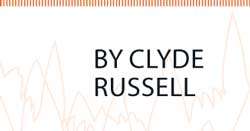Reply To:
Name - Reply Comment
Last Updated : 2024-04-19 22:36:00

 The term “demand destruction” is again entering the lexicon of the current crude oil market as the sharp rise in prices raises concerns about when do consumers start cutting back on their fuel consumption.
The term “demand destruction” is again entering the lexicon of the current crude oil market as the sharp rise in prices raises concerns about when do consumers start cutting back on their fuel consumption.
While it’s probably impossible to pick the exact point at which this happens, the risk in the current cycle of rising prices is that it happens earlier than in the past in Asia, the main region driving the rising crude demand.
The reason for this is that many countries in Asia used the prior period of falling crude prices to end or dramatically scale back, their fuel subsidies.
This means that this time consumers in countries such as India, Indonesia and Malaysia are fully exposed to the rising crude prices, something that hasn’t been in the case in previous bull cycles.
The combined oil consumption of those three countries is about 6.5 million barrels per day (bpd), with India alone accounting for about 4.3 million bpd.
Even a 5 percent drop in demand for fuel in those countries would knock about 325,000 bpd from global crude oil consumption.
So far, it appears that consumers in those countries haven’t been exposed to the full extent of the crude oil increase.
Global benchmark Brent crude closed at US $ 74.64 a barrel on April 27, up 11.6 percent since the end of last year and 66.5 percent from last year’s low in June.
The price of a litre of diesel in New Delhi was Rs.65.93 on Sunday, according to thedata on the website of Indian Oil. This is equivalent to about US $ 1 a litre.
At the end of last year, the price of a litre of diesel was Rs.59.64, meaning it has risen by 10.5 percent so far this year, not quite keeping pace with the rise in Brent crude oil.
When crude was at its 2017 low in June, diesel was Rs.53.46 a litre in New Delhi, meaning it has risen about 23.3 percent since then, while Brent has jumped by 66.5 percent.
What appears to have happened is that the state-controlled oil majors such as Indian Oil have largely absorbed the cost of rising crude prices, partly because of government pressure to do so.
But there has to be a question mark as to how long this can continue to be the case.
Point of pain
Indian Oil’s share price has plunged 28 percent since its 2017 high, reached in August and there will likely come a point where the pain of the slumping stock price outweighs the political pressure to keep absorbing the cost of higher crude oil prices.
There is also some preliminary evidence that India’s appetite for crude oil is levelling off, with imports trending lower so far this year, according to vessel-tracking and port data compiled by Thomson Reuters Oil Research and Forecasts.
For the first 29 days of April, the data, which has been filtered to show only cargoes that have been discharged, show imports running at 3.97 million bpd.
This is down from 4.05 million bpd in March, 4.7 million bpd in February and 4.5 million bpd in January.
While there may be some seasonal slowing in India’s crude demand, it’s worth noting that April this year appears to be slightly weaker than the 4.01 million bpd imported in the same month in 2017.
In Indonesia, which ended gasoline subsidies in 2015 and lowered the diesel subsidy to 500 rupiah (3.6 U.S. cents) per litre in 2016, the retail prices also haven’t risen by as much as the price of crude oil.
Diesel was about the equivalent of about 75 cents a litre last week, up from 68 cents at the start of the year, according to the data on the website GlobalPetrolPrices.com.
Similar to India, this means the Indonesian consumers have only been partially slugged the increase in the price of crude oil, meaning the state-owned fuel retailer has been absorbing the difference via shrinking profit margins.
Again, how much longer this can continue is uncertain, but one would imagine at some point the rising crude prices will have to be reflected in higher retail prices for diesel and gasoline.
Even when retail fuel prices do rise, picking the exact level at which consumers cut back on usage, either directly by driving or flying less or indirectly by purchasing fewer goods and services as they divert income to rising fuel bills, is a challenge and will vary from country to country.
But the absence of fuel subsidies in most Asian nations is likely to mean the region feels the pain of the jump in crude prices far faster than was the case previously.
(Reuters)

Add comment
Comments will be edited (grammar, spelling and slang) and authorized at the discretion of Daily Mirror online. The website also has the right not to publish selected comments.
Reply To:
Name - Reply Comment
On March 26, a couple arriving from Thailand was arrested with 88 live animal
According to villagers from Naula-Moragolla out of 105 families 80 can afford
Is the situation in Sri Lanka so grim that locals harbour hope that they coul
A recent post on social media revealed that three purple-faced langurs near t